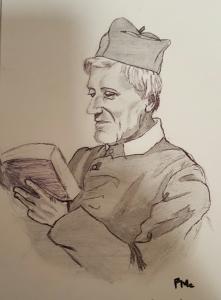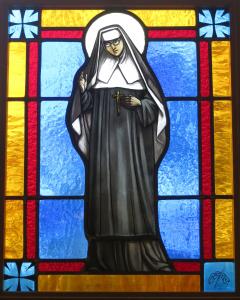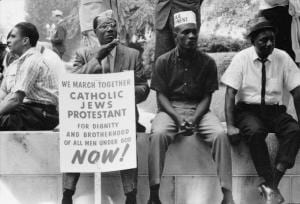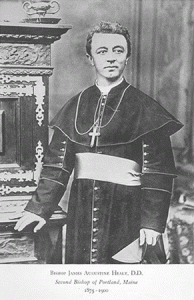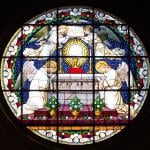From its founding in 1856 as Seton Hall College to the present day, Seton Hall has been dedicated to supporting the vision that its founder, Bishop James Roosevelt Bayley, described as providing “a home for the mind, the heart, and the spirit.” Its Catholic roots have made the University a home that is open to people of all faiths, creeds and colors. The seeds of diversity at Seton Hall were planted almost from its birth; during its first twelve years, Seton Hall enrolled more than 500 freshmen from 17 states and six foreign countries. The University continues to reflect the growing ethnic scope of its students and the increasing diversity of the Church and society it serves. During the 19th century, in spite of setbacks, lean times and the Civil War, the College continued to expand. By 1937, Seton Hall established a University College. This marked the first matriculation of women at Seton Hall. Seton Hall became coeducational in 1968.
The College was organized into a university in 1950 following an unprecedented grow thin enrollment. The College of Arts and Sciences, the Stillman School of Business, the School of Nursing and College of Education and Human Services comprised the University; the School of Law opened its doors in 1951, with Miriam Rooney as the first woman dean of law in the United States. The next two decades saw the construction and modernization of a large number of facilities and the construction of the library, science building, residence halls and the Bishop Dougherty University Center. Many new programs and majors were inaugurated, as were important social outreach efforts. New ties were established with the private and industrial sectors, and a growing partnership developed with federal and state governments in creating programs for the economically and educationally disadvantaged. The interior of the University’s Chapel of the Immaculate Conception, taken in 1965. The 70s and 80s continued to be a time of growth and renewal. New business and nursing classroom buildings and an art center were opened. In 1984, the Immaculate Conception Seminary School of Theology returned to Seton Hall, its original home until 1926, when it moved to Darlington. The Richie Regan Athletics and Recreation Center was dedicated in 1987. With the construction of four new residence halls between 1986-88, and the purchase of an off-campus apartment building in 1990, the University made a significant change to its previous identity as a primarily commuter institution. Seton Hall is now recognized as a residential campus, providing living space for approximately 2100 students. The physical development of the campus continued in the 1990s. The $20 million Walsh Library opened in 1994, and its first-class study and research resources marked the beginning of a technological transformation of Seton Hall. Jubilee Hall, the University’s newest academic center dedicated in 1997, is a clear example of Seton Hall’s continued commitment to undergraduate education and the expanding role of information technology in higher education. All classrooms in this six-story, 126,000 square-foot building are wired for network and Internet connections, and many of the lecture halls are equipped with distance-learning technology. A new School of Law building and parking garage were also constructed in the 90s. The John C. Whitehead School of Diplomacy and International Relations was founded in 1997 in an alliance with the United Nations Association of the United States of America. In 1998, all incoming full-time, first-year students were issued laptop computers as part of the University’s innovative and nationally recognized mobile computing program.
The College was organized into a university in 1950 following an unprecedented grow thin enrollment. The College of Arts and Sciences, the Stillman School of Business, the School of Nursing and College of Education and Human Services comprised the University; the School of Law opened its doors in 1951, with Miriam Rooney as the first woman dean of law in the United States. The next two decades saw the construction and modernization of a large number of facilities and the construction of the library, science building, residence halls and the Bishop Dougherty University Center. Many new programs and majors were inaugurated, as were important social outreach efforts. New ties were established with the private and industrial sectors, and a growing partnership developed with federal and state governments in creating programs for the economically and educationally disadvantaged. The interior of the University’s Chapel of the Immaculate Conception, taken in 1965. The 70s and 80s continued to be a time of growth and renewal. New business and nursing classroom buildings and an art center were opened. In 1984, the Immaculate Conception Seminary School of Theology returned to Seton Hall, its original home until 1926, when it moved to Darlington. The Richie Regan Athletics and Recreation Center was dedicated in 1987. With the construction of four new residence halls between 1986-88, and the purchase of an off-campus apartment building in 1990, the University made a significant change to its previous identity as a primarily commuter institution. Seton Hall is now recognized as a residential campus, providing living space for approximately 2100 students. The physical development of the campus continued in the 1990s. The $20 million Walsh Library opened in 1994, and its first-class study and research resources marked the beginning of a technological transformation of Seton Hall. Jubilee Hall, the University’s newest academic center dedicated in 1997, is a clear example of Seton Hall’s continued commitment to undergraduate education and the expanding role of information technology in higher education. All classrooms in this six-story, 126,000 square-foot building are wired for network and Internet connections, and many of the lecture halls are equipped with distance-learning technology. A new School of Law building and parking garage were also constructed in the 90s. The John C. Whitehead School of Diplomacy and International Relations was founded in 1997 in an alliance with the United Nations Association of the United States of America. In 1998, all incoming full-time, first-year students were issued laptop computers as part of the University’s innovative and nationally recognized mobile computing program.
(From the University website)



